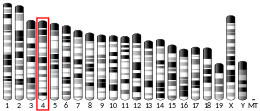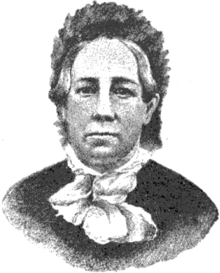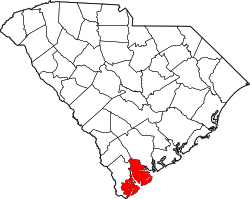HES5
HES5전사인자 HES-5는 인간의 HES5 [5][6]유전자에 의해 암호화되는 단백질이다.
HES5는 두뇌 발달 [7]과정을 조절한다.편평상경부암에서 HES5 발현이 CIN보다 유의미하게 높으며 CIN에서 일반 자궁경부 [8]상피보다 높다.인간 HES5 유전자는 노치 수용체에 결합해 연골 [9]분화 과정에서 HES5의 발현이 감소한다.
레퍼런스
- ^ a b c ENSG00000197921 GRCh38: 앙상블 릴리즈 89: ENSG00000273529, ENSG00000197921 - Ensembl, 2017년 5월
- ^ a b c GRCm38: 앙상블 릴리즈 89: ENSMUSG000048001 - 앙상블, 2017년 5월
- ^ "Human PubMed Reference:". National Center for Biotechnology Information, U.S. National Library of Medicine.
- ^ "Mouse PubMed Reference:". National Center for Biotechnology Information, U.S. National Library of Medicine.
- ^ Takebayashi K, Akazawa C, Nakanishi S, Kageyama R (Feb 1995). "Structure and promoter analysis of the gene encoding the mouse helix-loop-helix factor HES-5. Identification of the neural precursor cell-specific promoter element". J Biol Chem. 270 (3): 1342–9. doi:10.1074/jbc.270.3.1342. PMID 7836401.
- ^ "Entrez Gene: HES5 hairy and enhancer of split 5 (Drosophila)".
- ^ Hatakeyama J, Bessho Y, Katoh K, Ookawara S, Fujioka M, Guillemot F, Kageyama R (November 2004). "Hes genes regulate size, shape and histogenesis of the nervous system by control of the timing of neural stem cell differentiation". Development. 131 (22): 5539–50. doi:10.1242/dev.01436. PMID 15496443.
- ^ Liu J, Ye F, Chen H, Lü W, Zhou C, Xie X (2007). "Expression of differentiation associated protein Hes1 and Hes5 in cervical squamous carcinoma and its precursors". Int. J. Gynecol. Cancer. 17 (6): 1293–9. doi:10.1111/j.1525-1438.2007.00930.x. PMID 17388915. S2CID 25609083.
- ^ Karlsson C, Jonsson M, Asp J, Brantsing C, Kageyama R, Lindahl A (March 2007). "Notch and HES5 are regulated during human cartilage differentiation". Cell Tissue Res. 327 (3): 539–51. doi:10.1007/s00441-006-0307-0. PMID 17093926. S2CID 33749726.
추가 정보
- Strausberg RL, Feingold EA, Grouse LH, et al. (2003). "Generation and initial analysis of more than 15,000 full-length human and mouse cDNA sequences". Proc. Natl. Acad. Sci. U.S.A. 99 (26): 16899–903. doi:10.1073/pnas.242603899. PMC 139241. PMID 12477932.
- Gazit R, Krizhanovsky V, Ben-Arie N (2004). "Math1 controls cerebellar granule cell differentiation by regulating multiple components of the Notch signaling pathway". Development. 131 (4): 903–13. doi:10.1242/dev.00982. PMID 14757642.
- Nakatani T, Mizuhara E, Minaki Y, et al. (2004). "Helt, a novel basic-helix-loop-helix transcriptional repressor expressed in the developing central nervous system". J. Biol. Chem. 279 (16): 16356–67. doi:10.1074/jbc.M311740200. PMID 14764602.
- Kamakura S, Oishi K, Yoshimatsu T, et al. (2004). "Hes binding to STAT3 mediates crosstalk between Notch and JAK-STAT signalling". Nat. Cell Biol. 6 (6): 547–54. doi:10.1038/ncb1138. PMID 15156153. S2CID 36887899.
- Katoh M, Katoh M (2005). "Identification and characterization of human HES2, HES3, and HES5 genes in silico". Int. J. Oncol. 25 (2): 529–34. doi:10.3892/ijo.25.2.529. PMID 15254753.
- Ohtsuka T, Imayoshi I, Shimojo H, et al. (2006). "Visualization of embryonic neural stem cells using Hes promoters in transgenic mice". Mol. Cell. Neurosci. 31 (1): 109–22. doi:10.1016/j.mcn.2005.09.006. PMID 16214363. S2CID 35470002.
- Ong CT, Cheng HT, Chang LW, et al. (2006). "Target selectivity of vertebrate notch proteins. Collaboration between discrete domains and CSL-binding site architecture determines activation probability". J. Biol. Chem. 281 (8): 5106–19. doi:10.1074/jbc.M506108200. PMID 16365048.
- Gregory SG, Barlow KF, McLay KE, et al. (2006). "The DNA sequence and biological annotation of human chromosome 1". Nature. 441 (7091): 315–21. Bibcode:2006Natur.441..315G. doi:10.1038/nature04727. PMID 16710414.
- Karlsson C, Brantsing C, Svensson T, et al. (2007). "Differentiation of human mesenchymal stem cells and articular chondrocytes: analysis of chondrogenic potential and expression pattern of differentiation-related transcription factors". J. Orthop. Res. 25 (2): 152–63. doi:10.1002/jor.20287. PMID 17072841.
- Karlsson C, Jonsson M, Asp J, et al. (2007). "Notch and HES5 are regulated during human cartilage differentiation". Cell Tissue Res. 327 (3): 539–51. doi:10.1007/s00441-006-0307-0. PMID 17093926. S2CID 33749726.
외부 링크
이 기사에는 미국 국립 의학 도서관(미국 국립 의학 도서관)의 공공 도메인 텍스트가 포함되어 있습니다.






